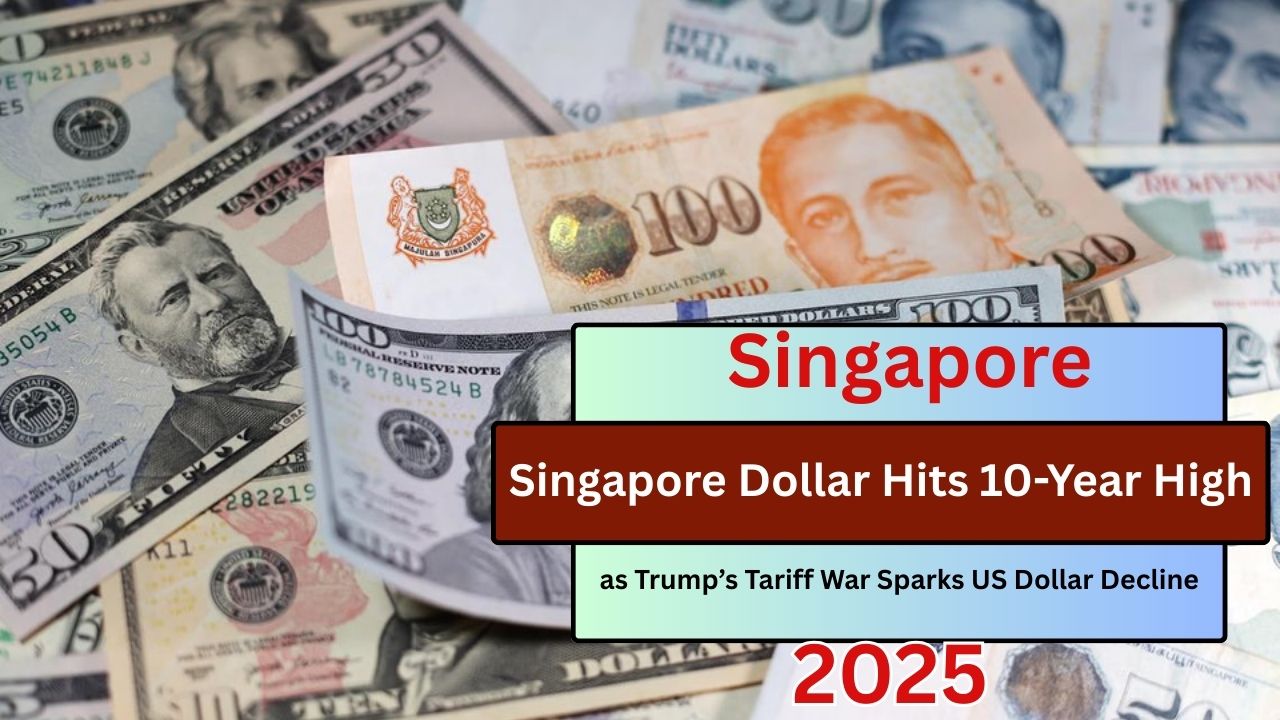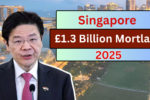The Singapore dollar (SGD) is closing in on a 10-year high, trading at 1.2964 per US dollar as of May 6, 2025. This marks a significant 4.6% rise since the beginning of the year. The appreciation is largely driven by weakening investor confidence in the US dollar, a result of recent trade policy moves by former President Donald Trump and broader shifts in global capital flows.
US Dollar Slips on Global Stage
The decline in the US dollar comes amid renewed trade tensions. Trump’s imposition of aggressive tariffs on key global economies, particularly China, has triggered uncertainty in global financial markets. The US dollar index—used to measure the greenback’s strength against major global currencies—has fallen nearly 10% since January.
Financial analysts suggest that this decline reflects waning confidence in the dollar’s role as a global reserve currency. According to Politico, financial institutions and investors are increasingly looking for alternative stores of value amid geopolitical uncertainty and the growing unpredictability of US trade policy.
Regional Currencies Rise, Led by Singapore
The Singapore dollar’s strength is not an isolated development. It is part of a broader trend where Asian currencies are rapidly appreciating. The Taiwan dollar jumped 8% in just two days—its steepest rise in recent history. The Chinese yuan and the Hong Kong dollar have also experienced significant upward movement, reflecting a growing regional confidence and shift in investment patterns.
Singapore’s currency, managed under a managed float regime by the Monetary Authority of Singapore (MAS), is especially responsive to economic fundamentals. The MAS uses the exchange rate as its primary monetary policy tool, and the recent rise reflects both regional capital inflows and strong investor confidence in Singapore’s economic stability.
Capital Flow Shifts Away from US Assets
Another contributing factor to the SGD’s rise is the shift in capital allocation by large Asian financial institutions. Taiwanese insurers, for example, are reportedly considering selling up to $70 billion worth of US dollar holdings. These funds are expected to be redirected toward Asian markets and local currency-denominated assets, including Singapore.
According to Reuters, this trend represents a reversal of decades-long preferences for US treasuries and dollar-denominated investments, highlighting a potential structural change in the global financial landscape.
Strengthening Currency: A Double-Edged Sword
While a strong SGD is a sign of confidence, it comes with mixed effects for Singapore’s economy.
Pros:
- Imported Inflation Control: A stronger currency reduces the cost of imported goods and raw materials, helping to control inflation.
- Consumer Purchasing Power: Singaporeans benefit from cheaper overseas goods and services, boosting local consumption.
Cons:
- Export Competitiveness: Singapore’s export-oriented industries may face challenges as stronger exchange rates make local goods more expensive in global markets.
- Tourism and Hospitality: A robust SGD may deter tourists seeking cost-effective destinations in Asia.
Policy Implications for Singapore
The MAS may need to consider these trends in its next monetary policy statement. While the authority has allowed for a gradual appreciation of the SGD to combat inflationary pressures, a sudden surge could necessitate intervention to maintain economic balance.
Singapore’s robust financial and trade ecosystem—underpinned by policies from institutions like Enterprise Singapore and MTI—provides a cushion against external shocks. However, the authorities must remain vigilant as the global economy adjusts to shifting geopolitical and trade dynamics.
Conclusion
The Singapore dollar’s climb toward a 10-year high is emblematic of deeper changes in global finance and trade. As investors turn away from the US dollar in response to policy unpredictability, regional currencies like the SGD are becoming stronger. For Singapore, the challenge now lies in balancing the benefits of a strong currency with its impact on economic competitiveness.
This article has been carefully fact-checked by our editorial team to ensure accuracy and eliminate any misleading information. We are committed to maintaining the highest standards of integrity in our content.

Outside of work, he enjoys playing chess, following cricket, and writing short stories. His commitment to integrity and in-depth analysis strengthens OTE News’ mission of providing trustworthy journalism.




